Carsten Höller advocates the virtues of confusion in two major Denmark exhibitions
The German artist (and erstwhile scientist) is staging complementary surveys at Copenhagen Contemporary and the Kunsten Museum of Modern Art Aalborg
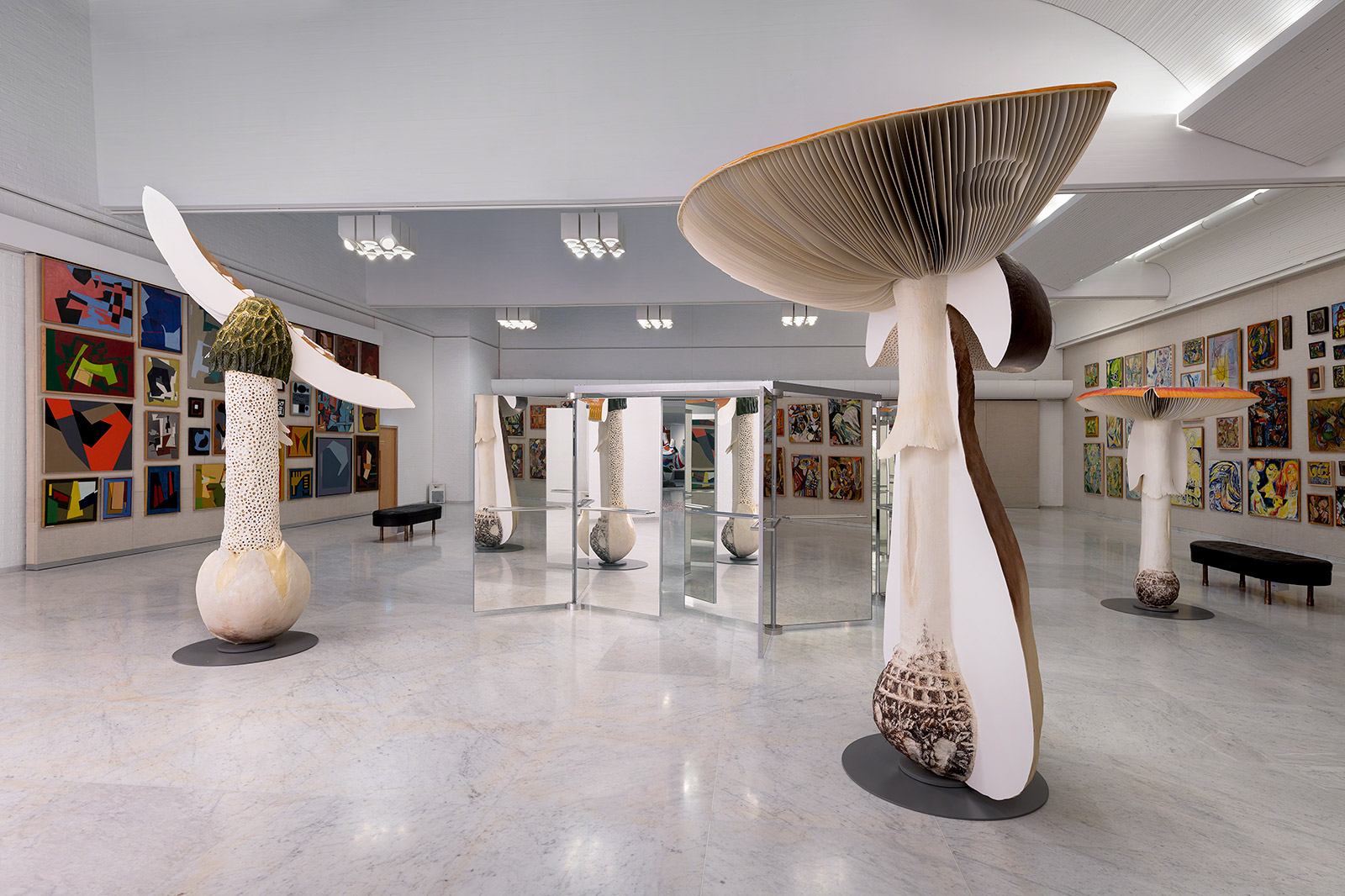
Naturalist and geographer Stepan Krasheninnikov first observed a bewildering phenomenon in 1755: Russian soldiers in Siberia ingesting Amanita muscaria mushrooms (also known as the fly agaric) were gripped by hallucinations, heightened senses, and other strange and violent impulses. According to Siberian folklore, the red-and-white mushrooms were used for recreational as well as shamanic purposes.
Some two centuries later in 1977, Danish chemist Povl Krogsard-Larsen began synthesising dozens of muscimol derivatives, eventually identifying a potent psychoactive molecule in the fly agarics. The resulting compound, gaboxadol, has been produced in permanently mind-altering quantity by artist and mushroom maestro Carsten Höller for his solo exhibition at Kunsten Museum of Modern Art Aalborg – one of two major surveys currently open in Denmark.
The Kunsten exhibition, titled ‘Behaviour’, is a joint endeavour with Copenhagen Contemporary, where the art centre in the Danish capital’s industrial neighbourhood Refshaleøen is staging its own Höller exhibition: ‘Reproduction’. The shows span Höller’s entire career, ranging from his earliest works (including his infamous Killing Children series from the 1990s) to new, site-specific installations. It’s the Belgian-born artist’s first foray onto Danish soil – and it’s as perception-bending, befuddling, and ultimately amusing as we’ve come to expect from the former scientist.
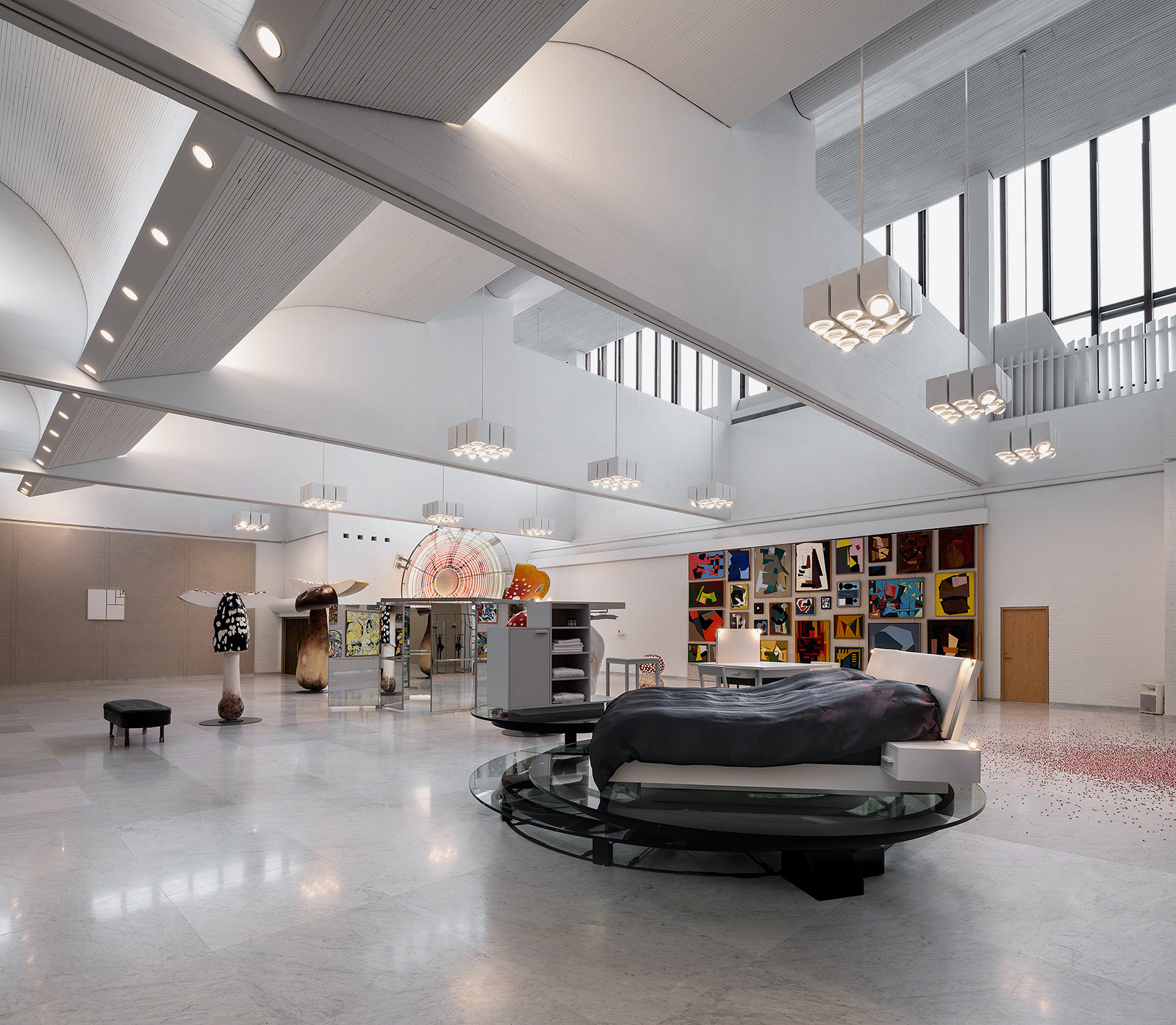

Above, Revolving Hotel Room, 2008; Revolving Doors, 2004/2019; Double Mushroom Circle, 2010; Decimal Clock (White and Pink), 2018; Pill Clock (red and white pills), 2015; Divisions Square (Black Lines on White Background), 2018; and Smell of My Mother, 2017, by Carsten Höller. Below, installation view of ‘Behaviour’ at Kunsten Museum of Modern Art Aalborg. Courtesy of the artist; Gagosian; Galleria Continua; Air de Paris; and Château La Coste
The serene architecture of the Kunsten – the only art museum ever designed by Finnish icon Alvar Aalto – provides the perfect folly for Höller’s artistic experiments. Here, Höller has drawn more than 110 artworks from the museum’s collection, all dated between 1935-1956 and by artists hailing from the abstract expressionism and CoBrA movements, two benches, each emitting the scent of his mother and father respectively that have been reconstructed using samples of their clothing. It’s a testament to the triggering power of smell – his mother’s heady perfume could easily feel like it belong to yours.
Mushrooms are a mainstay of Höller’s practice, and here his sculptures are dotted around amongst other signature works, such as Upside-Down Goggles (1994-ongoing) and Expedition Rucksack (1995/2019). In one corner of the museum, red and white pills are dutifully spat out every three seconds. from an unseen mechanism attached to the ceiling. Höller has provided a water cooler and paper cups nearby for daring visitors, though quite provocatively won’t reveal the contents of the pills. And for a truly immersive experience, visitors can book an overnight stay in Höller’s Revolving Hotel Room (2008) on Airbnb.
The Copenhagen Contemporary exhibition injects slightly more fun into the proceedings than its Aalborg counterpart, albeit with a dystopian slant. Wooden hoardings initially make the show seem entirely inaccessible; after being funnelled down the sides, we eventually end up in a sort of fairground for the end of the world. A pair of carousels revolve with an impossible sluggishness next to a mushroom sculpture perched on a rounded bottom – an invitation for visitors to try, unsuccessfully, to topple it over. (Höllers scented benches, too, are on view in Copenhagen).
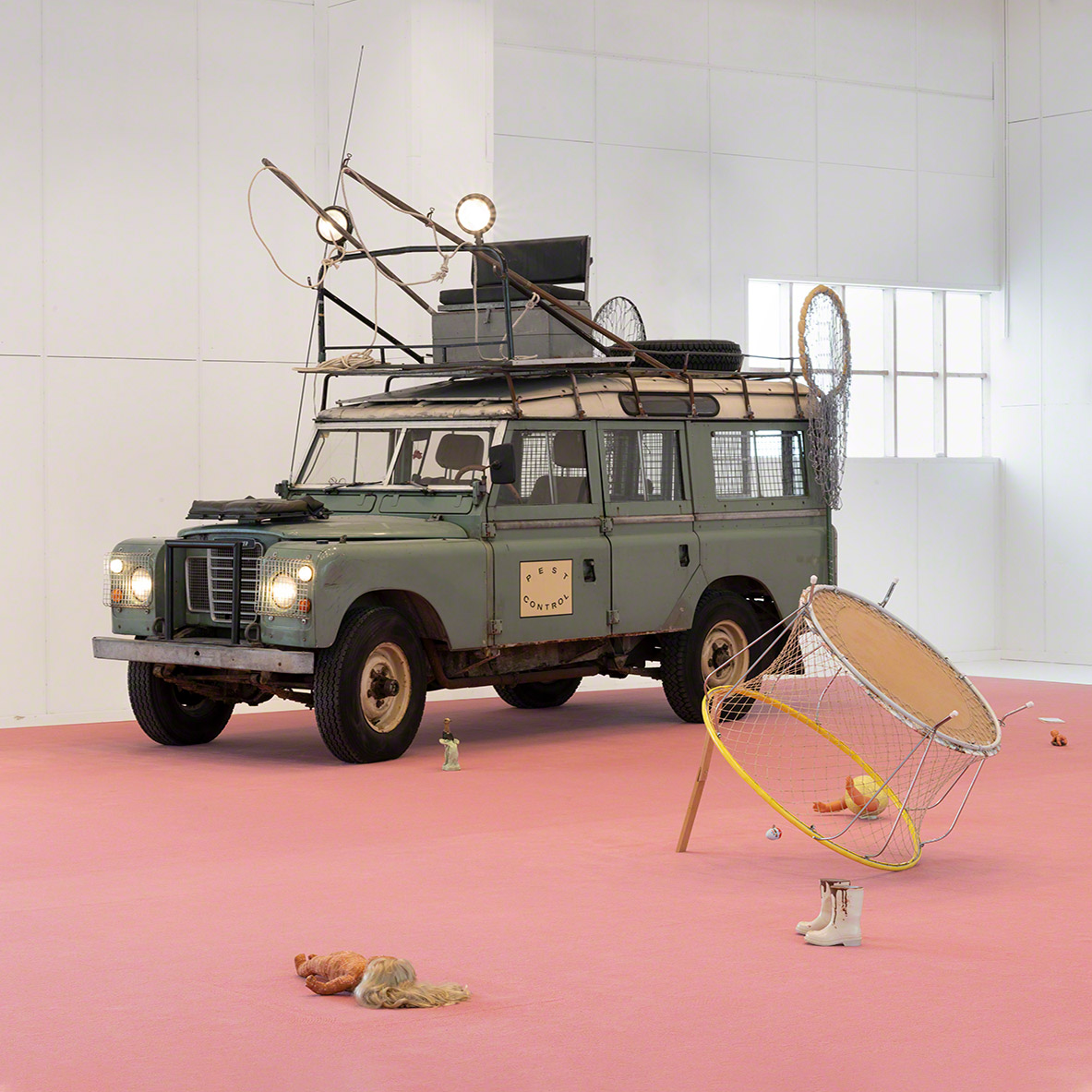

Killing Children, 1990-2019, by Carsten Höller, installation view at Copenhagen Contemporary. Courtesy of the artist and Copenhagen Contemporary
Still, one can’t help feeling like the oblivious subject of an experiment. And it was a challenge to reconcile the shows as two halves of one whole. But, as Kunsten chief curator noted, ‘A common thread in both exhibitions is a universe located somewhere between cool analysis and engaging, immediate sensory experience.’ Not that Höller offers any answers, instead proposing possibilities.
‘My objects are tools or devices with a specified use, which is to create moment of slight confusion or to induce hallucinations in the widest sense. That is why I call them “confusion machines”,’ the artist told Hans Ulrich Obrist in a 2001 interview. Confused we are, but according to recent findings by researchers, the uncanny feeling of being confronted by something that doesn’t make sense can be a good thing. We’ll defer to the scientific experts

Double Mushroom Circle, 2010; Smell of My Father, 2017, by Carsten Höller, installation view at Kunsten Museum of Modern Art Aalborg.

Gartenkinder, 2014/2019, by Carsten Höller, installation view at Copenhagen Contemporary. Courtesy the artist and Gagosian
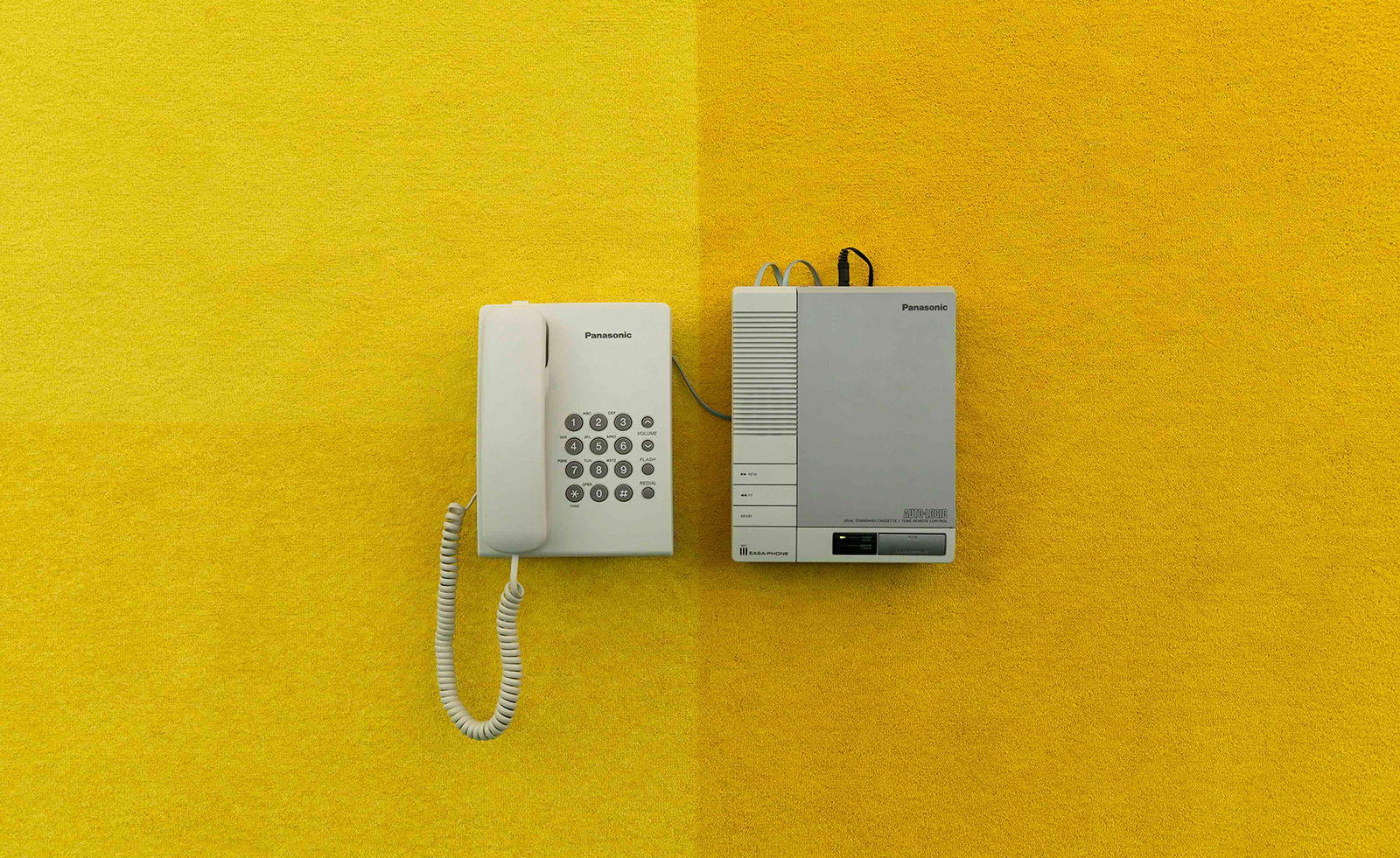
What Is Love, Art, Money?, 2011, by Carsten Höller, installation view at Copenhagen Contemporary. Courtesy the artist and Gagosia
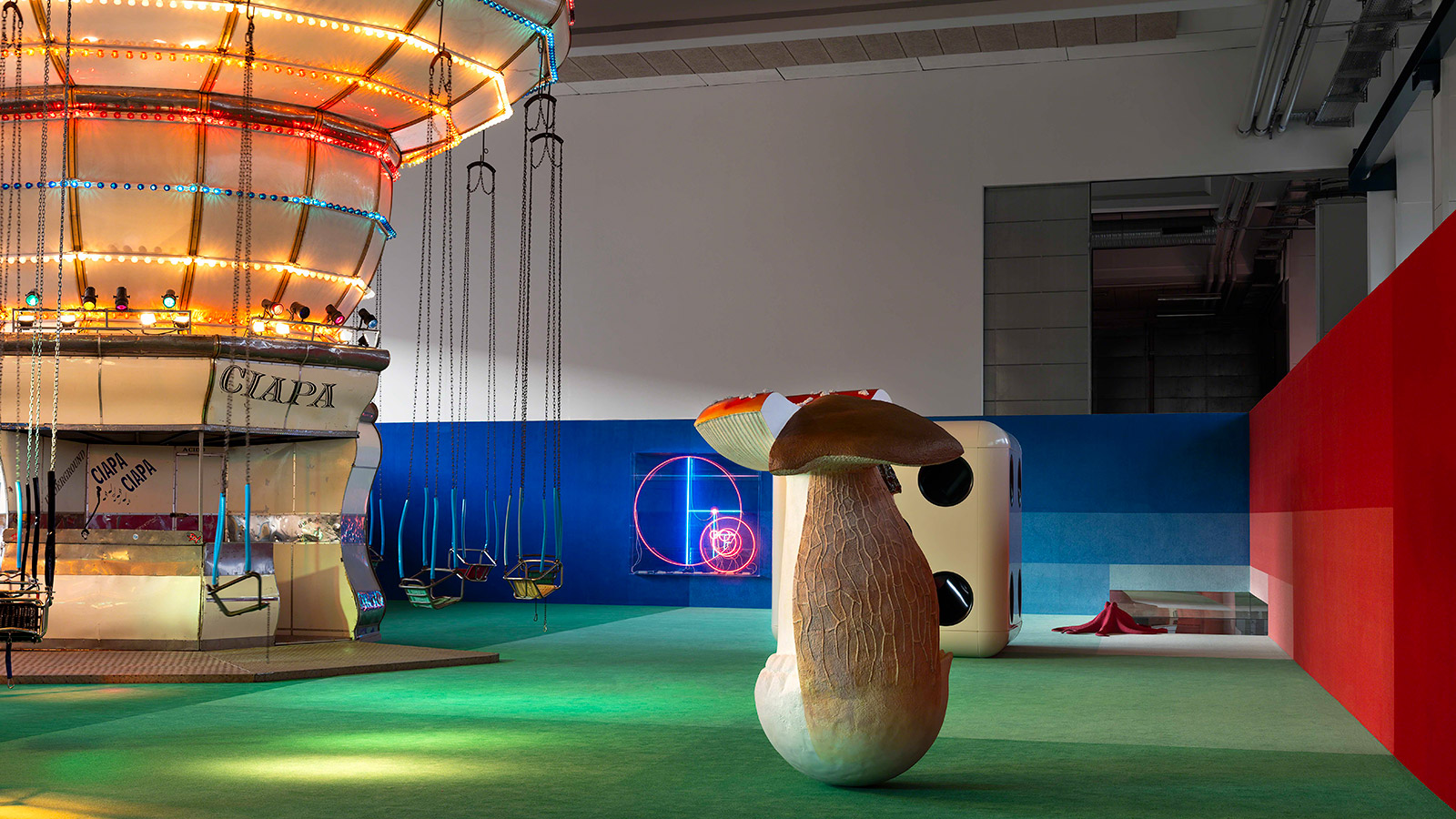
Gartenkinder, 2014/2019, by Carsten Höller, installation view at Copenhagen Contemporary. Courtesy the artist and Gagosian

Killing Children, 1990-2019, by Carsten Höller, installation view at Copenhagen Contemporary. Courtesy of the artist and Copenhagen Contemporary
INFORMATION
‘Behaviour’, until 23 February 2020, Kunsten Museum of Modern Art Aalborg. ‘Reproduction’, until 13 April 2020, Copenhagen Contemporary. kunsten.dk; copenhagencontemporary.org
Receive our daily digest of inspiration, escapism and design stories from around the world direct to your inbox.
-
 Click to buy: how will we buy watches in 2026?
Click to buy: how will we buy watches in 2026?Time was when a watch was bought only in a shop - the trying on was all part of the 'white glove' sales experience. But can the watch industry really put off the digital world any longer?
-
 Don't miss these art exhibitions to see in January
Don't miss these art exhibitions to see in JanuaryStart the year with an inspiring dose of culture - here are the best things to see in January
-
 Unmissable fashion exhibitions to add to your calendar in 2026
Unmissable fashion exhibitions to add to your calendar in 2026From a trip back to the 1990s at Tate Britain to retrospectives on Schiaparelli, Madame Grès and Vivienne Westwood, 2026 looks set to continue the renaissance of the fashion exhibition
-
 How ethical is Google Street View, asks Jon Rafman in Copenhagen
How ethical is Google Street View, asks Jon Rafman in CopenhagenIn 'Report a Concern - the Nine Eyes Archives' at Louisiana Museum of Art, Copenhagen, Jon Rafman considers technology's existential implications
-
 Inside Valdemars Slot, where Baroque surroundings meet contemporary art
Inside Valdemars Slot, where Baroque surroundings meet contemporary artThis Danish palace has been in the same family for 11 generations; now, its owner has transformed it into a very unique art destination
-
 Kaari Upson’s unsettling, grotesque and seductive world in Denmark
Kaari Upson’s unsettling, grotesque and seductive world in DenmarkThe Louisiana Museum of Modern Art in Denmark is staging the first comprehensive survey of late artist Kaari Upson’s work
-
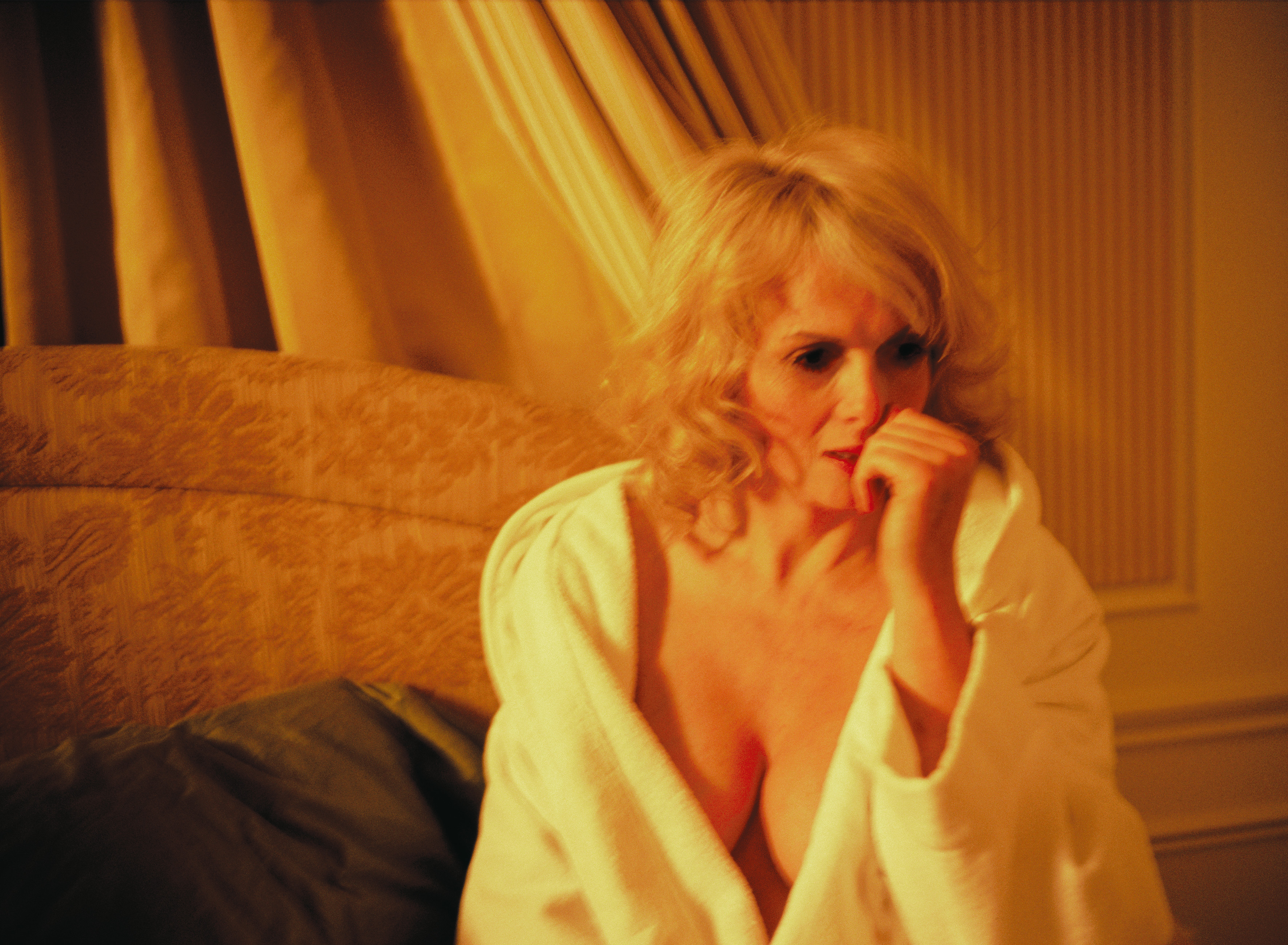 Carsten Höller’s new Book of Games: 336 playful pastimes for the bold and the bored
Carsten Höller’s new Book of Games: 336 playful pastimes for the bold and the boredArtist Carsten Höller invites readers to step out of their comfort zone with a series of subversive games
-
 AI and creativity: Louisiana museum considers the human in the machine
AI and creativity: Louisiana museum considers the human in the machine‘The Irreplaceable Human’ at Louisiana Museum of Modern Art in Denmark asks what creativity is in the age of AI
-
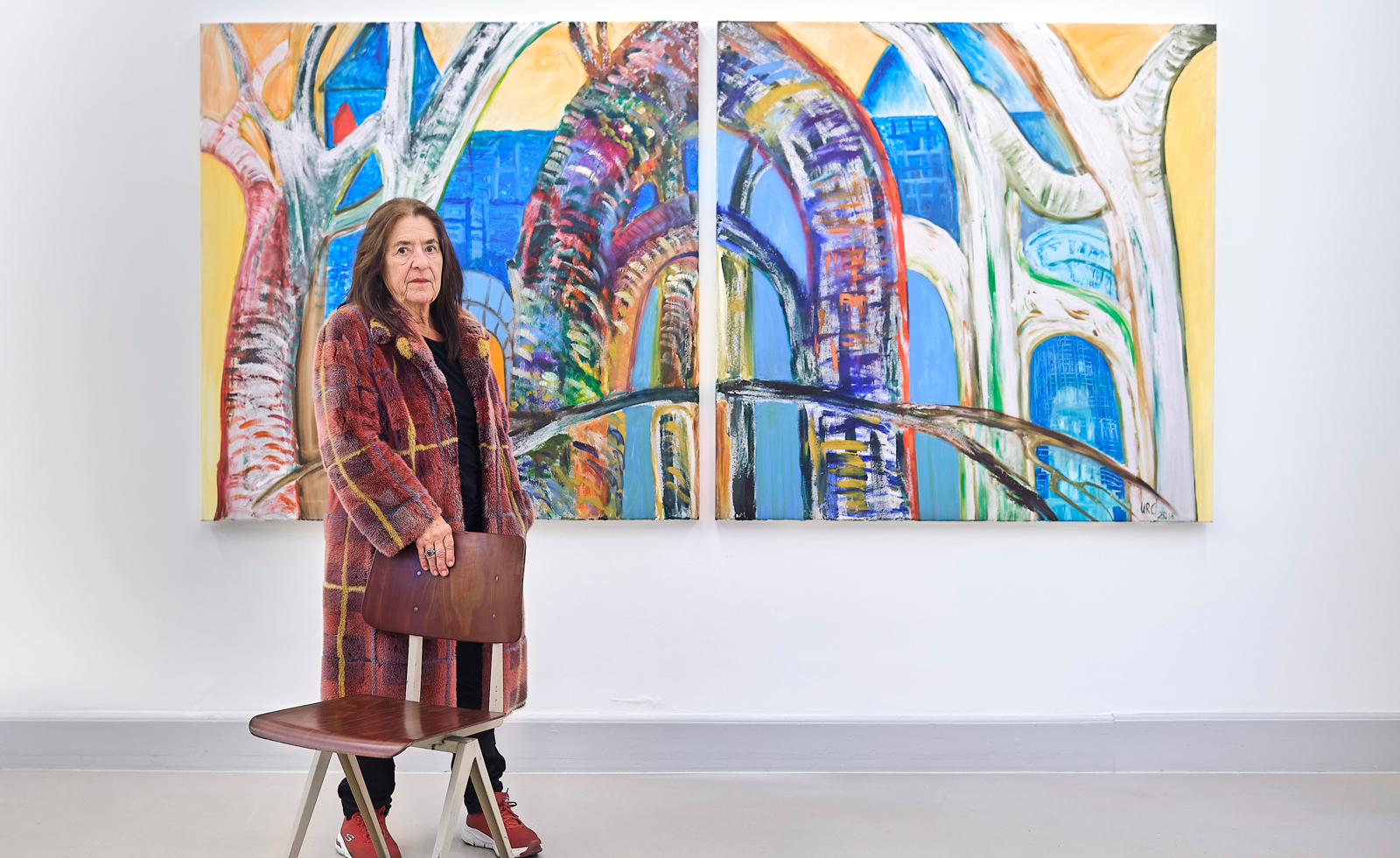 Ursula Reuter Christiansen on her art: ‘I have to go through, and through, and through’
Ursula Reuter Christiansen on her art: ‘I have to go through, and through, and through’German-Danish artist Ursula Reuter Christiansen tells Wallpaper* what drives her, as her exhibition ‘Rose Thorn’ opens at Von Bartha, Copenhagen
-
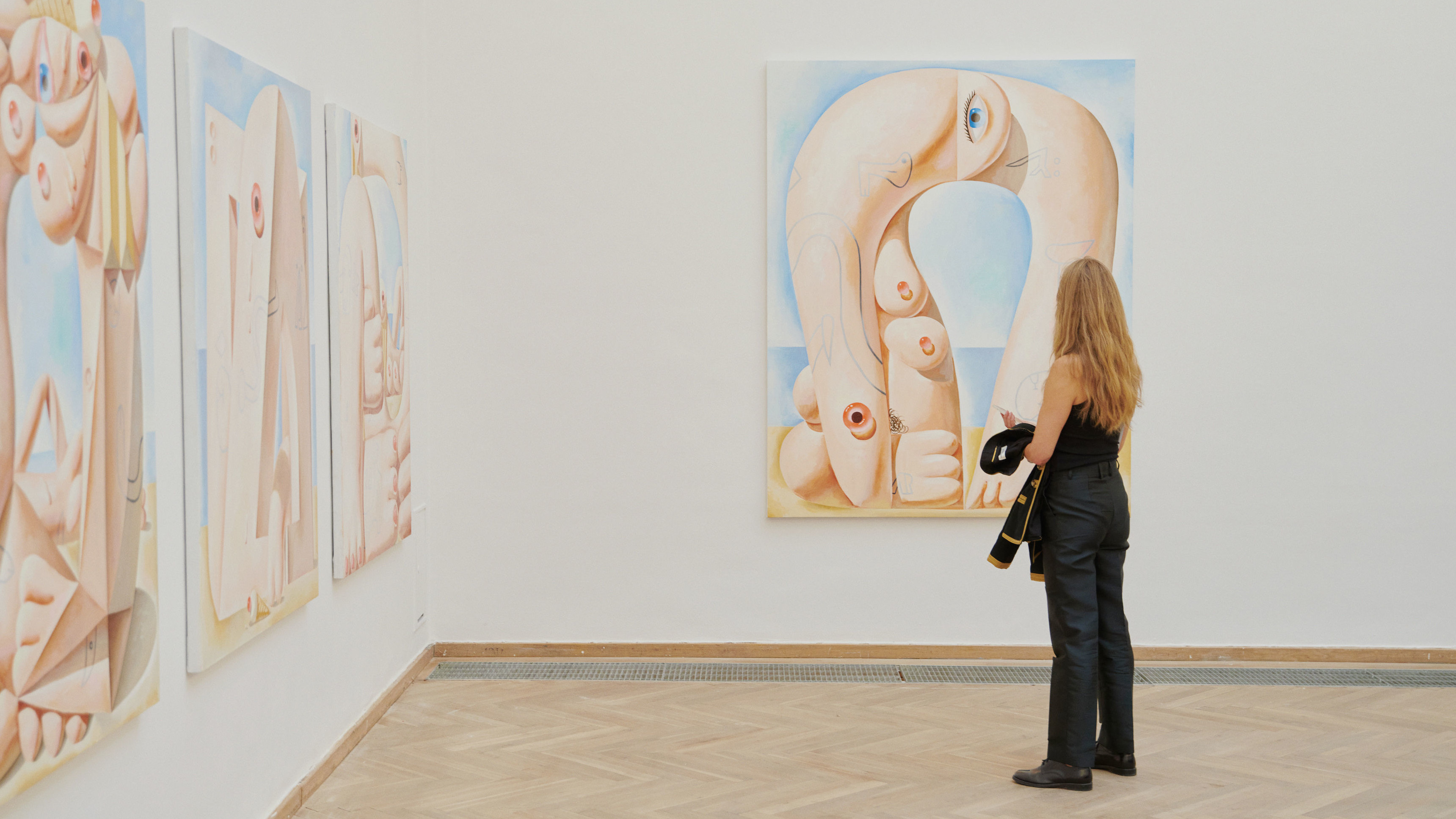 How Copenhagen’s Chart Art Fair celebrated its first decade
How Copenhagen’s Chart Art Fair celebrated its first decadeThe 11th Chart Art Fair highlights span architectural installations, an ongoing sculpture show, and a novice collectors’ exhibition
-
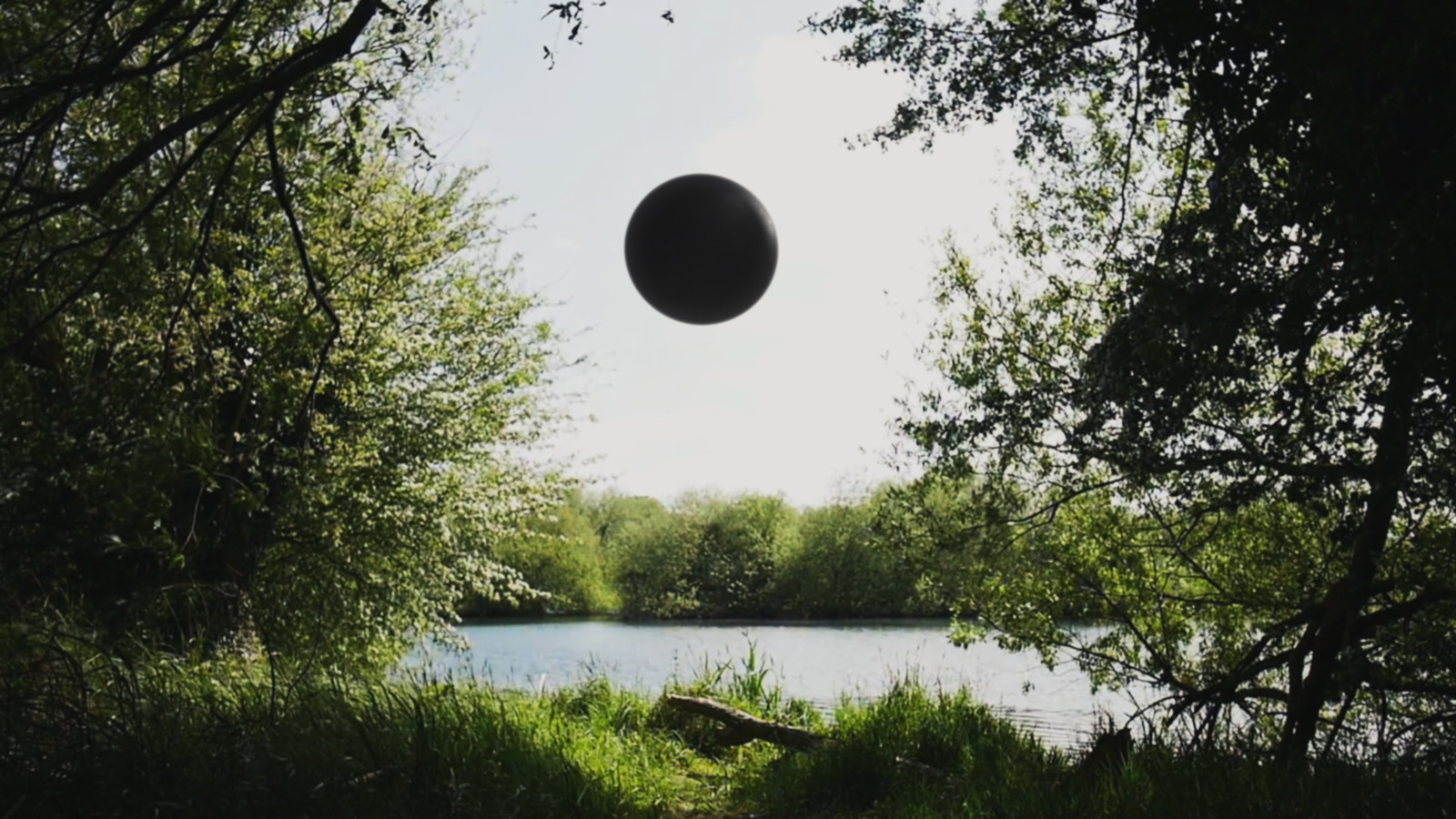 American artist Rachel Rose reaches for the sun and the moon in her Nordic exhibition debut
American artist Rachel Rose reaches for the sun and the moon in her Nordic exhibition debutRachel Rose’s ‘Good Morning Midnight’ at GL Strand, Copenhagen, centres on her cinematic Enclosure (2019) and recent video The Last Day (2023)